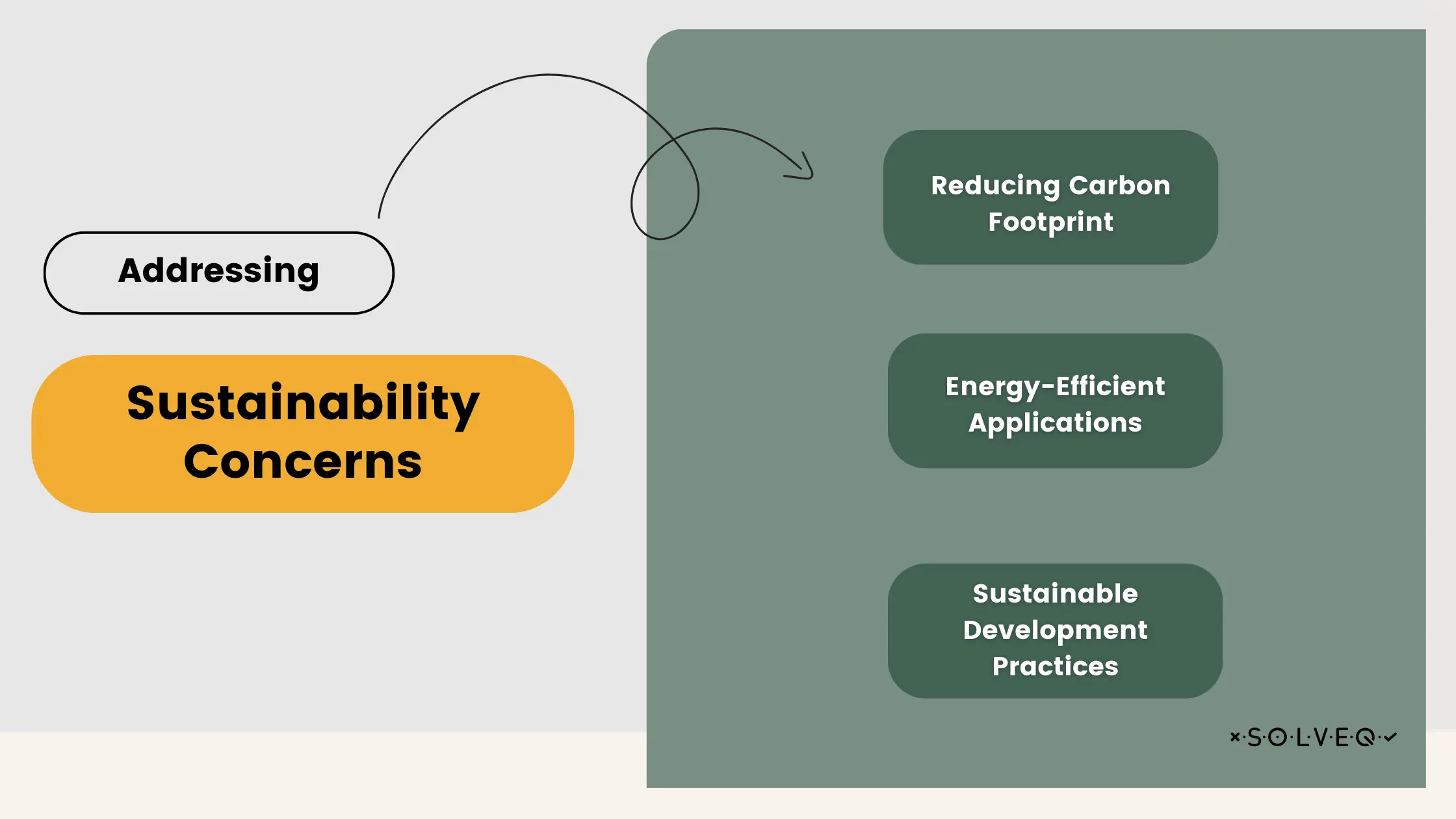Unified Codebase, Diverse Platforms: Cross-Platform Development in 2024
27 Feb 2024 • 30 min read

Marcin Kulawik

Cross-platform development is reshaping the tech landscape, blending efficiency with innovation to redefine app creation. In this article, we explore key themes: emerging technologies, performance optimization, and the integration of AI and AR/VR, along with the crucial roles of security and ethical practices. We highlight the tangible benefits, such as cost efficiency and wider market reach, that this approach offers. Join us in this brief yet comprehensive journey through the world of cross-platform development, as we uncover its impacts and future potential.
Rise of New Frameworks and Technologies
The landscape of cross-platform development is continually evolving, with 2024 witnessing the rise and enhancement of several frameworks and technologies. These advancements are central to the growing trend of developing applications that offer seamless experiences across various platforms using a unified codebase.
Flutter's Leap Forward
Flutter, originally developed by Google, has made significant strides in 2024. The framework, known for its "write once, run anywhere" philosophy, has further reduced the gap between native performance and cross-platform ease. Its latest updates focus on improving performance, reducing app size, and enhancing the ease of UI creation, thus solidifying its position as a go-to framework for developers aiming for both iOS and Android platforms.
React Native's Evolving Ecosystem
React Native, pioneered by Facebook, continues to be a prominent player in the cross-platform space. The community around React Native has grown, bringing in more third-party plugins and tools that make the development process more intuitive. React Native's recent updates have emphasized on improving the bridge to native components, making it easier for developers to tap into native features of smartphones while maintaining a shared codebase.
Xamarin's Integration with .NET
Xamarin, a Microsoft-owned framework, has seen further integration with the .NET ecosystem in 2024. This integration has enhanced Xamarin's appeal, especially among developers who are already familiar with the .NET framework. Xamarin.Forms, a feature of Xamarin, allows developers to build UIs that work across multiple platforms with a single, shared codebase, further streamlining the development process.
Emergence of New Entrants
The year 2024 has also witnessed the emergence of new frameworks in the cross-platform domain. These new entrants are focusing on overcoming some of the limitations of existing frameworks, such as reducing the learning curve for new developers, offering more robust native integrations, and improving runtime performance.
Advancements in Progressive Web Apps (PWAs)
Progressive Web Apps have taken a significant leap forward in 2024. PWAs, known for providing a high-quality user experience that is consistent across all devices, have benefited from advancements in service workers and cache APIs. These improvements have made PWAs more reliable and faster, even on low-quality networks, thus making the web a more potent platform for cross-platform development.
WebAssembly's Role
WebAssembly has continued to be a game-changer in the realm of web technologies. By enabling code written in languages like C, C++, and Rust to run on the web at near-native speed, WebAssembly is broadening the possibilities for web applications. Its role in cross-platform development is increasingly significant, as it allows for high-performance applications to be developed and deployed across various platforms using a single codebase.

In conclusion, the year 2024 stands as a testament to the vibrant and ever-evolving world of cross-platform development. With the advancement of existing frameworks like Flutter, React Native, and Xamarin, combined with the emergence of new technologies and the robust capabilities of PWAs and WebAssembly, developers are now equipped with a diverse array of tools to build applications that transcend platform boundaries, all while maintaining a unified codebase.
Integration with Advanced Technologies
In 2024, the realm of cross-platform development is not just about bridging various platforms; it's also about integrating advanced technologies to revolutionize how apps are built and function. Artificial Intelligence (AI), Machine Learning (ML), Augmented Reality (AR)/Virtual Reality (VR), and the Internet of Things (IoT) are at the forefront of this integration, each playing a pivotal role in enhancing the capabilities of cross-platform applications.
AI and ML in Development Tools
AI and ML are being increasingly woven into the fabric of cross-platform development tools. These technologies are facilitating smarter and more efficient development processes. For instance, AI-powered code completion tools are revolutionizing the way developers write code, offering suggestions that are context-aware and tailored to individual coding styles. ML algorithms are being used to predict and fix potential bugs automatically, significantly reducing the time spent on debugging.
Enhancing App Functionality with AI and ML
Beyond the development process, AI and ML are also enhancing the functionality of the apps themselves. Cross-platform apps are increasingly leveraging AI for personalized user experiences, such as recommendation systems, intelligent search functionalities, and customized content feeds. ML models, running either on the cloud or on the device, are enabling sophisticated features like image recognition and natural language processing in apps across various platforms.
The Emergence of AR/VR in Cross-Platform Apps
AR and VR technologies are no longer confined to the realms of gaming and simulation. In 2024, they are becoming integral components of cross-platform applications, offering immersive experiences in education, retail, and healthcare, among other sectors. Cross-platform development tools are increasingly accommodating AR/VR technologies, providing developers with frameworks to create immersive experiences that are accessible on a wide range of devices.
Accommodating AR/VR Technologies
To integrate AR/VR into cross-platform apps, development platforms are evolving. They now offer comprehensive libraries and APIs that make it easier to incorporate AR/VR features into applications. These advancements allow for seamless integration of 3D models, spatial audio, and interactive experiences that can function across different hardware specifications.
Constant Rise of IoT's Importance
The Internet of Things (IoT) continues its upward trajectory in importance in the cross-platform development space. As more devices become interconnected, the need for applications that can operate and synchronize across various platforms and devices has skyrocketed. Cross-platform development is increasingly addressing this need by providing frameworks that can easily integrate with IoT devices, allowing for the creation of unified ecosystems that can be controlled from any device, be it a smartphone, tablet, or PC.

In conclusion, the integration of advanced technologies like AI, ML, AR/VR, and IoT into cross-platform development is not just a trend but a fundamental shift in how applications are conceived, developed, and experienced. These technologies are empowering developers to create smarter, more efficient, and more immersive applications, while also opening up new possibilities in terms of app functionality and user engagement.
Focus on Performance and Optimization
In 2024, one of the most significant trends in cross-platform development is the intensified focus on performance and optimization. As these frameworks become more popular, there's a growing need to ensure they can match, if not surpass, the efficiency and smoothness of native applications. This year has seen remarkable progress in this area, driven by innovative approaches to optimizing cross-platform app performance.
Closing the Gap with Native Development
Cross-platform frameworks have made substantial strides in narrowing the performance gap with native development. This progress is primarily due to enhancements in the frameworks' core architectures and rendering engines. For instance, updates in Flutter and React Native have optimized the way these frameworks interact with native components, leading to smoother animations and faster load times. Additionally, the use of Just-In-Time (JIT) and Ahead-Of-Time (AOT) compilation techniques has greatly improved runtime performance and app responsiveness.
Efficient Use of Native Modules
The intelligent use of native modules is another area where cross-platform frameworks have evolved. By selectively incorporating native modules, developers can leverage the full power of the underlying platform for critical performance-intensive tasks while maintaining a shared codebase. This approach ensures that key functionalities, like graphics processing or data handling, are as efficient as possible, providing a native-like experience within a cross-platform app.
Advanced Compilation Techniques
The adoption of advanced compilation techniques is revolutionizing app performance in cross-platform development. Techniques such as tree shaking, which removes unused code from the final app bundle, and incremental builds, which speed up the development process by only rebuilding parts of the app that have changed, are becoming standard practices. These techniques not only improve app performance but also reduce the app's size, making it faster to download and update.
Performance Profiling Tools
The development and refinement of performance profiling tools specific to cross-platform frameworks have been a game-changer. These tools allow developers to monitor app performance in real-time, identifying and addressing bottlenecks more efficiently. For instance, new profiling tools in Flutter and React Native provide detailed insights into the app's CPU and memory usage, helping developers optimize resource utilization.
Optimizing for Different Platforms
Another focus area has been optimizing apps for different platforms. Cross-platform development tools are becoming more intelligent in understanding the unique characteristics and constraints of each platform, allowing them to automatically adjust performance parameters. For instance, an app can dynamically alter its graphic resolutions and processing demands based on whether it's running on a high-end smartphone or a lower-spec device.
In conclusion, the year 2024 marks a pivotal moment in cross-platform development, with a renewed emphasis on performance and optimization. Through advancements in framework architectures, smarter use of native modules, innovative compilation techniques, sophisticated performance profiling tools, and platform-specific optimizations, cross-platform frameworks are rapidly closing the gap with native development. These enhancements are crucial in delivering high-quality, efficient, and responsive applications across diverse platforms, catering to the ever-growing demand for seamless cross-platform experiences.

Developer Experience and Productivity
As cross-platform development continues to evolve in 2024, there is a significant emphasis on enhancing the developer experience and productivity. This focus is crucial, as the efficiency and satisfaction of developers directly impact the quality and speed of application development. Several key areas have seen remarkable improvements, including development tools, Integrated Development Environments (IDEs), community support, and learning resources.
Advancements in Development Tools and IDEs
The tools and IDEs supporting cross-platform development have undergone substantial improvements. Features like hot reload, which allows developers to instantly see the changes made in the code without restarting the app, have become more refined and reliable. This feature significantly accelerates the development process and enhances the developer experience by providing immediate feedback.
Better debugging tools have also been a focus in 2024. These tools have become more intuitive and powerful, offering advanced capabilities like predictive debugging and automated error detection. This enhancement not only saves valuable development time but also reduces the complexity involved in troubleshooting and resolving issues.
Integrated design systems within IDEs have been another major advancement. These systems enable developers to seamlessly translate design elements into code, ensuring consistency in the app’s look and feel across different platforms. This integration reduces the back-and-forth between designers and developers, streamlining the development process.
Community and Support Services
The community around cross-platform development frameworks has grown stronger and more vibrant in 2024. Platforms like Flutter, React Native, and Xamarin boast large, active communities where developers can share knowledge, collaborate on projects, and offer mutual support. These communities play a vital role in enhancing developer productivity, as they provide a wealth of resources, including tutorials, best practices, and ready-to-use code snippets.
Support services have also seen significant enhancements. Many frameworks now offer dedicated support channels, including forums, chat groups, and official support desks. These services provide developers with quick and reliable assistance, reducing the time spent on resolving complex issues.
Enhancing Developer Learning and Productivity
The availability and quality of learning resources have greatly improved. There are more comprehensive and up-to-date online courses, webinars, and documentation available than ever before. These resources cater to developers at all skill levels, from beginners to advanced, and cover a wide range of topics from basic setup to sophisticated optimization techniques.
In conclusion, the year 2024 marks a notable improvement in the realm of developer experience and productivity in cross-platform development. With enhanced development tools, IDEs, community support, and learning resources, developers are now better equipped to build high-quality cross-platform applications more efficiently and effectively. These advancements not only benefit the developers but also contribute to the overall growth and innovation in the field of cross-platform application development.
Adoption in Enterprise and Niche Markets
In 2024, cross-platform development continues to make significant strides in both general app markets and specific sectors, including enterprises and niche industries. This growth is propelled by the demand for versatile, efficient, and scalable app solutions catering to diverse user bases and operational needs.
Enterprises Embracing Cross-Platform Development
Enterprises of various sizes are increasingly adopting cross-platform development for both internal and customer-facing applications. The appeal lies in the frameworks' ability to provide unified solutions across multiple platforms, leading to reduced development time and costs. For instance, Ford's utilization of Salesforce for reinventing business processes showcases how enterprises can rapidly adapt to new technologies. Similarly, GE Appliances leveraged connected services to enhance customer engagement and service efficiency.
Case Studies in Enterprise Adoption
John Lewis, a renowned retailer, used data and AI to centralize its customer data, leading to enhanced customer relationships and operational efficiency. Another example is Schneider Electric, which unlocked new sales opportunities and streamlined its operations using Salesforce solutions.
Niche Markets and Industries Leveraging Cross-Platform Solutions:
Specific sectors like IoT, automotive, healthcare, and more are turning to cross-platform solutions for their unique needs. In the automotive industry, Formula 1 boosted fan engagement and satisfaction by implementing advanced data-driven strategies. Healthcare sees innovations like Humana using data to enhance patient care and trust.
The increasing adoption of cross-platform development across various industries highlights its effectiveness and versatility. By offering cost-effective and scalable solutions, these technologies are addressing the complex challenges of the modern digital landscape. The success stories of companies like Ford, GE Appliances, John Lewis, and Schneider Electric demonstrate the profound impact of cross-platform solutions in driving innovation and efficiency.
Security and Compliance
In 2024, security and compliance are paramount in the realm of cross-platform development. With diverse platforms sharing a common codebase, the approach to ensuring data protection and regulatory compliance presents unique challenges and requires specific best practices. Here's an insight into the security landscape of cross-platform development, highlighting the key challenges, solutions, and best practices.
Challenges in Cross-Platform Security:
Cross-platform development, while efficient, brings forth specific security concerns that need careful attention:

- Unified Codebase Vulnerabilities: The same code running across multiple platforms can lead to widespread vulnerabilities. A single security flaw in the shared code can potentially affect every instance of the application.
- Platform-Specific Security Features: Aligning the cross-platform application with the unique security protocols of each platform is a complex but necessary task to ensure overall security.
- Data Storage and Transmission: Managing the security of data storage and transmission across varied platforms and devices is particularly challenging, especially with the increasing sophistication of cyber threats.
- Compliance with Regulations: Cross-platform applications must navigate the intricate web of global and local regulatory requirements, a task that becomes even more complex when dealing with multiple platforms.
Solutions and Best Practices
To tackle these challenges, certain strategies and best practices are essential:
- Regular Security Audits: Proactive and regular security audits of the codebase can help in early detection and rectification of potential vulnerabilities.
- Leveraging Platform-Specific Security Features: It’s crucial to make the best use of the inherent security features of each platform, integrating them effectively into the shared codebase.
- Secure Data Handling Practices: Implementing state-of-the-art encryption for data at rest and in transit, and ensuring secure authentication and authorization mechanisms are non-negotiable for protecting sensitive data.
- Compliance as a Priority: Embedding compliance with relevant regulations into the development process from the onset is key to avoiding future legal and security pitfalls.
The security and compliance landscape in cross-platform development is complex yet navigable. By understanding and addressing the unique challenges through regular audits, platform-specific enhancements, rigorous data security practices, and a compliance-first approach, developers can build cross-platform applications that are not only efficient and versatile but also secure and compliant.
Sustainability and Ethics in Development
In the ever-evolving field of cross-platform development, sustainability and ethics have become increasingly crucial in 2024. Developers and companies are recognizing the importance of these aspects not only as a corporate responsibility but also as a key factor in the long-term success and acceptance of their applications.
Addressing Sustainability Concerns
The impact of technology on the environment is a growing concern, and cross-platform development is stepping up to address this issue:

- Reducing Carbon Footprint: Cross-platform development contributes to a lower carbon footprint in the tech industry. By enabling the use of a single codebase to deploy applications across multiple platforms, it reduces the resources and energy typically required for developing multiple native apps.
- Energy-Efficient Applications: There's a growing emphasis on creating applications that are more energy-efficient, thereby reducing their environmental impact. This includes optimizing performance to reduce battery consumption on mobile devices and ensuring efficient server-side operations for web applications.
- Sustainable Development Practices: Developers are adopting sustainable practices, like using cloud-based development environments and leveraging renewable energy sources for powering data centers, to further minimize the environmental impact.
Ethical Considerations in Development
Ethical considerations are paramount in ensuring that cross-platform applications are accessible and inclusive:
- Accessibility as a Priority: There's a strong focus on making applications accessible to all users, including those with disabilities. This includes designing user interfaces that are compatible with screen readers, ensuring adequate color contrast, and providing subtitles or captions for multimedia content.
- Inclusivity in Design: Inclusivity is being championed in cross-platform development. This means creating applications that cater to a diverse user base, considering different cultures, languages, and age groups in design and functionality.
- Ethical Use of Data: With cross-platform applications often having access to a wealth of user data, ethical considerations in data usage and privacy are more important than ever. This involves transparent data collection policies, robust security measures, and adherence to privacy regulations.
Sustainability and ethics in cross-platform development are not just about compliance or branding; they are about creating a positive impact in the tech world and society at large. By focusing on reducing the environmental impact and ensuring that applications are accessible and inclusive, developers and companies are contributing to a more sustainable and ethical future in technology.
The Future of Cross-Platform Development
As we look towards the future of cross-platform development, several emerging technologies and community movements are poised to significantly impact its trajectory.
Predictions for Emerging Technologies
- Quantum Computing: The advent of quantum computing could revolutionize cross-platform development by offering unparalleled processing power. This technology may enable the creation of extremely complex and sophisticated applications that can run efficiently across various platforms, opening up new possibilities in fields like data analysis and cryptography.
- Blockchain and Decentralization: Blockchain technology is expected to influence cross-platform development, particularly in the areas of security and data integrity. Decentralized applications (dApps) could become more prevalent, with cross-platform frameworks adapting to support blockchain technology, ensuring secure and transparent data transactions across platforms.

The Role of Open-Source Communities
- Innovation and Collaboration: Open-source communities are the backbone of the cross-platform development ecosystem. These communities facilitate innovation by collaboratively solving complex problems and sharing solutions, driving the evolution of cross-platform tools and frameworks.
- Democratization of Technology: The open-source movement plays a crucial role in democratizing technology, making advanced tools and frameworks accessible to developers worldwide. This inclusivity fosters a diverse development landscape, where solutions are not just driven by commercial entities but by a collective effort of developers from varied backgrounds.
Case Studies and Success Stories
Real-world examples and insights from those who have tread the path successfully provide invaluable lessons and inspiration in the field of cross-platform development. As our team at SolveQ specialises in cross-platform development we can proudly display our project:
Robust cross-platform mobile application for Telenor
Our collaboration with Telenor is a prime example of cross-platform development success. We tackled the challenges of creating a unified, efficient application across multiple platforms. Their approach included comprehensive planning and strategic evaluation, ensuring that the project met the specific needs of the client. This case illustrates the importance of a tailored approach in cross-platform development, addressing unique client requirements and delivering a product that aligns with their vision.
To give you an even fuller picture of what cross-platform solutions can bring to your company here are some examples of other well-known companies benefiting from implementing them:
Airbnb's Cross-Platform Solution
Airbnb, a renowned global travel platform, successfully utilized cross-platform development to enhance its mobile application. Initially built using a combination of technologies, they shifted towards React Native, which allowed them to maintain a single codebase for both iOS and Android platforms. This transition helped Airbnb streamline their development process, improve app performance, and ensure a consistent user experience across devices.
Microsoft's Xamarin Use in the Azure App
Microsoft's Azure app is another notable example. By leveraging Xamarin, a cross-platform development framework, Microsoft created an app that provides a seamless experience across iOS and Android, while maintaining a high level of performance. This approach showcases how cross-platform development can be effectively used in complex, enterprise-level applications to provide consistent functionality and user experience.
These cases demonstrate the versatility and efficiency of cross-platform development in meeting diverse needs, from consumer-focused apps like Airbnb to enterprise solutions like Microsoft's Azure app. They highlight how a well-implemented cross-platform strategy can lead to successful outcomes in different industry sectors.
Summary
Throughout this exploration, we've witnessed how cross-platform development is revolutionizing the app world, from emerging frameworks and advanced tech integrations to performance optimization and robust security measures. It stands as a testament to efficiency, wider reach, and cost-effectiveness in the digital era. As we look ahead, the future of app development seems increasingly intertwined with cross-platform strategies, promising innovation and accessibility. For those poised to embrace this shift, the journey towards adopting cross-platform solutions is not just a step but a leap towards future-proofing their digital presence.
Share:
Looking for expert development team?
Schedule a call with Tech Consultant

Marcin Kulawik
Founder and CEO of SolveQ. Huge fan of building things with purpose, agility, and having fun while changing the World. Loves his family, teammates, and nature.